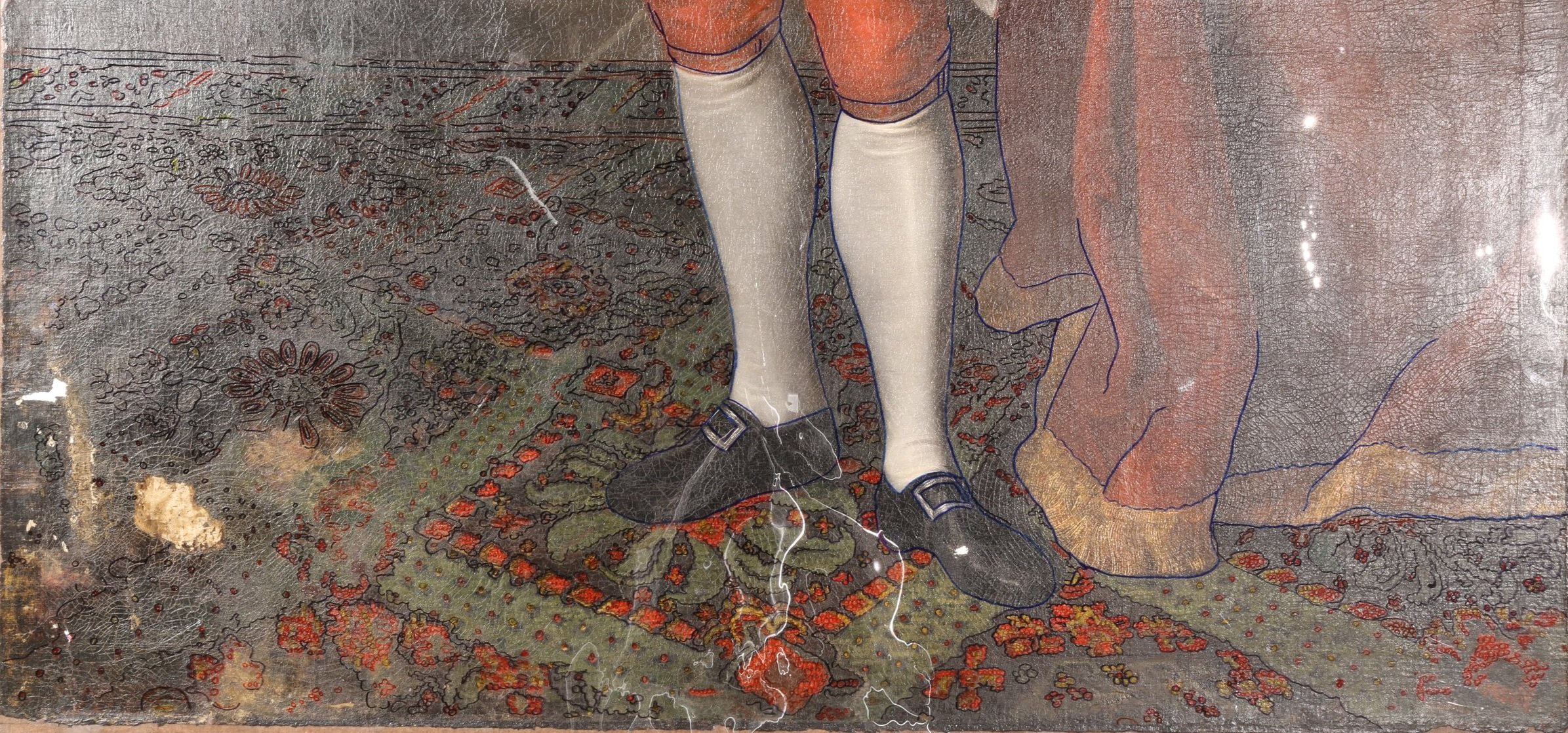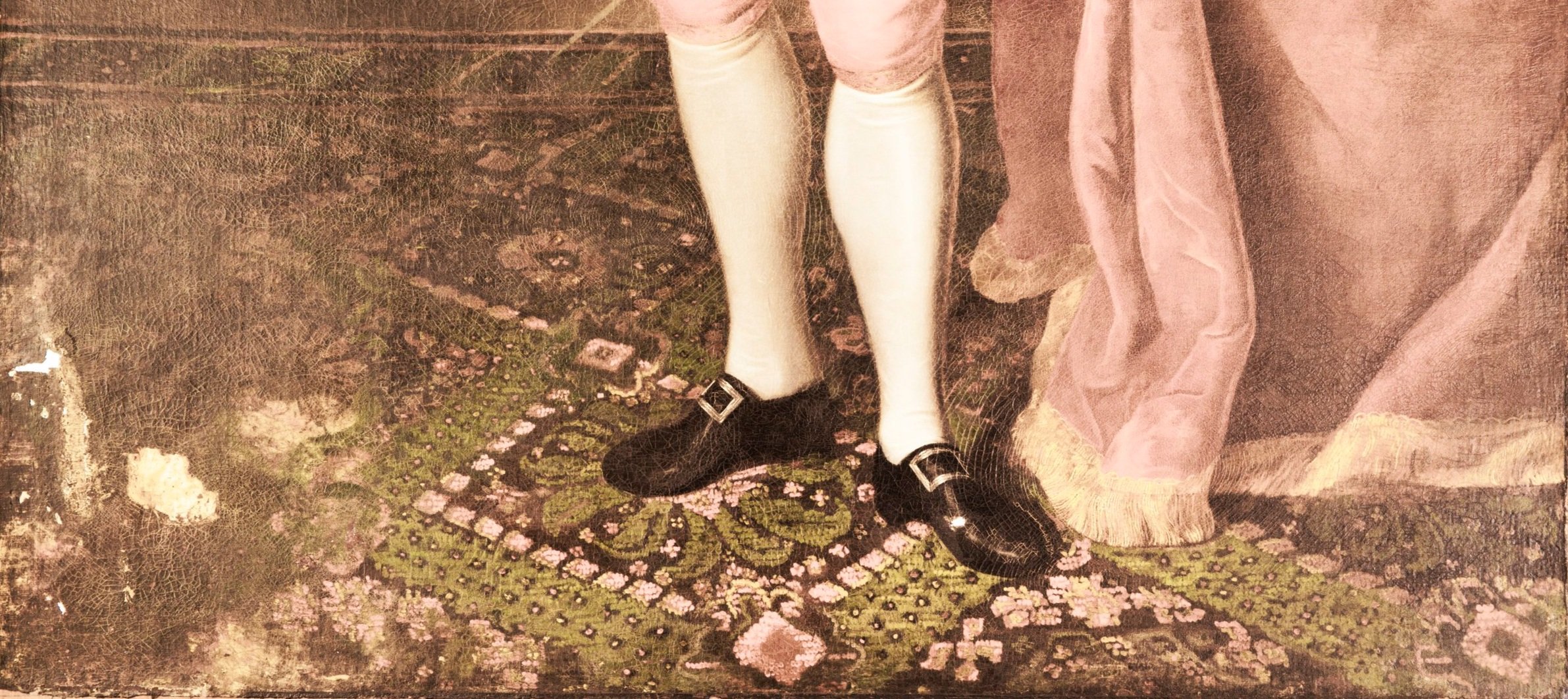Conrad Alexandre Gerrard, 1st Minister of France to the United States by Charles Willson Peale - 1779
Before treatment.
-
The Continental Congress commissioned the painting of Conrad Alexandre Gerard, first minister of France to the United States, by Charles Willson Peale, in 1779. Congress authorized Peale’s payment for his work in 1780, but the transaction never happened and remained in Peale’s & the Peale family’s possession until 1854 at which time the city of Philadelphia purchased it. It then hung in the main entry hallway of Independence Hall for over 100 years. The earliest notated records of restoration for this painting were by Pasquale Farina in 1916, and then Anne Clapp in 1957 and 1961.
-
The painting is executed in a pigment rich oil medium over an artist applied white ground on medium weight plain-weave canvas. When it came to us, it was stretched over a six-member stretcher with one vertical and one horizontal crossbar. This stretcher was replaced after 1961 according to restoration documents, where the earlier glue adhesive lining was replaced with one of wax, which was now failing. As part of the wax lining, a coat of white paint was applied to the back of the current lining canvas presumably as a moisture repellent. The paint did not extend under the current stretcher bars. The old wax lining adhesive appears to be breaking down and the paint is beginning to lift with isolated areas detaching from the lining canvas. The paint layer had extensive age crackle throughout, with many circular radiating crack patterns from earlier blows or strikes to the canvas. There are several noticeable areas of paint repair or filling that were lifting as well. The paint layers had been abraded during previous cleaning/restoration attempts resulting in heavy overpaint to conceal the damaged areas.
Painted Artifacts
Before treatment - UV light.
After treatment - UV light.
-
Ultra violet illumination shows remnants of several early varnish coatings that were either thinned during cleaning, were not removed at all, or were only partially removed leaving darkened varnish remnants throughout. These early layers along with continuous brush coatings of varnish left extreme amounts of soot, dirt, and nicotine embedded in the structure. Ultra violet light has revealed several campaigns of inpainting and heavy overpaint. The inpainting/overpainting does not match the original painting colors and frequently matches the discolored/dirty old varnish coatings. Although delicate areas of fine inpainting are likely from the most recent Clapp conservation treatment, large areas of restorer’s overpaint are noted in the curtains, sculptural figures, tablecloth, and lower viewer’s corner of the rug. We carefully scrutinized the surface of the painting during treatment, but no remnant of a Pealle signature was found.
-
Prior to cleaning, flaking paint in isolated areas were set down, and consolidated using appropriate adhesives. Old duct tape was removed from the edges of the painting. This had been done because the original tacking edges had been cut off during the rigid glue lining process. Thick discolored varnish, overpaint, and dirt layers were then cleaned off with aqueous and organic solvent mixtures. When the viewer’s left side of the rug was cleaned, and dark overpaint was removed, we realized that there was a large replacement canvas insert in the corner and the paint was very dark, and almost blackened. The darkened appearance of the corner was not appropriate because the rest of the foreground was brightly lit. We quickly realized that a 2’x 2’ area in the lower corner had been burned, likely the result of the painting being hung and tipped out from the wall with a burning candle below. The flame had actually burned a hole through the corner of the painting and smoke charred the rest.
Once the cleaned painting was removed from its current stretcher, the old wax lining and adhesive were removed and a new well-bonded wax resin adhesive was added to a new Belgium linen lining. Because of the large tears, which we repaired as part of the treatment, we collectively decided to further mount the lined painting onto a light weight but rigid ¼” thick sheet of aluminum clade panel with a stable plastic core.
After cleaning (before varnish & fills)
After cleaning (varnished & filled)
-
After the painting was lined, mounted, and received an isolating coating of synthetic varnish we had many consultations with Park Service curatorial staff about the burned bottom corner of the painting. As a result, we conducted extensive historic rug research, and made several intricately traced Mylar and colored marker overlays. Because of this, we were able to determine the design of the complex missing rug and decide on how bright it was going to be after reconstruction. This entire process was further complicated by the fact that Peale’s perspective was not consistent or correct, and that the rug had a complicated shift pattern in the design. So, we needed to make it look, for lack of a better choice of words, structurally correct without altering Peale’s original concept too much. After almost 300 hours of inpainting out complex dark age cracks and rug reconstruction, Peale’s monumental portrait was once again brilliant and commanding.
After cleaning detail - It was determined that there was so much loss and blackened paint in the viewer’s lower left corner of the painting that the design elements in this section needed to be reconstructed.
After treatment.
-
In addition to all of the work on this painting, we had an equally difficult process with the historic gilded frame. After many consultations, it was determined that the original gilded surface was both too damaged and repaired too many times to retain this surface. The frame as a result was regilded and burnished appropriately with several layers of 23-karat gold leaf.
When framed and eventually returned to its normal exhibition space down the street from Independence Hall, its reception was considered to be outstanding. We are truly proud of the copious hours of hard work that went into this project, and of course the end result for the public to once again enjoy. We are thankful to the Independence Historical Trust who raised the funds to allow this important project to be a reality.
After treatment.
After treatment installed.
















